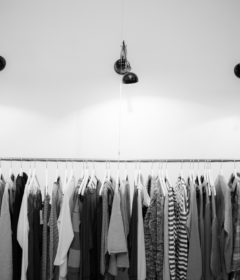Simply Coco – How One Lady Altered the style Industry Forever

Deep within the countryside of Saumur France, August 19, 1883 bore the birth of the little girl because of the name Gabrielle Chasnel. Because the illegitimate daughter of the forsaken romance between an ambitious seamstress along with a Nomad, Gabrielle would develop embarrassed with her family and then lead her existence in denial of her past. Still against all odds, she’d be a legend one that would eventually become known around the world as Coco Chanel. Being an integrative designer, Coco single-handedly launched what’s now regarded as among the world’s best brands: Chanel. Named after her adopted surname, the organization which first started in a tiny French village nearly a century ago has become worth an believed 11.8 billion dollars. Exactly how did Coco Chanel accomplish this type of rags-to-riches fairytale? Her journey wasn’t an easy one.
Gabrielle Chasnel started her existence because the second child of Jeanne Devolle and Albert Chanel, a youthful and unmarried couple trying to find independence and identity. When Gabrielle was created, her birth was recorded by two illiterate employees of the local hospice. The employees didn’t know of methods to spell ‘Chanel’, prompting these to improvise and spell her surname incorrectly as ‘Chasnel’ around the birth record. Later being an adult, Gabrielle would won’t correct this error in fear the truth of her illegitimacy would become public. The Chanel family battled financially during Gabrielle’s childhood, with Albert and Jeanne frequently sacrificing their very own food to give their kids. When Gabrielle was 12 years of age, she’d 4 brothers and sisters as a whole. Despite getting relatively close relationships together with her family now, Gabrielle would later insist that they was an only child, and pay her real brothers and sisters off in an effort to prevent public humiliation from the reality regarding her real family. Her father left at the start of 1895 that year to expedite across Europe, departing Jeanne alone to aid their 5 children. The mixture of loneliness and stress brought Jeanne to manage a number of medical conditions. Her health matters only grew to become worse through the years, and she or he eventually died from t . b during the cold months of 1895.
Gabrielle’s father came back for a short period, but soon left again hoping saving money to boost his family. Due to his absence, the Chanel children were divided to stick with relatives and orphanages. Gabrielle, together with her older sister were delivered to an orphanage. Given that they didn’t have money, the women remained in the home free of charge. Still, it was by no means considered a privilege. The nuns or “aunts” because they were known in the Catholic-based home were very cruel towards the Chanel siblings particularly, and frequently singled them out to be ‘charity cases’. To ‘earn her keep’, Gabrielle was made to grew to become a seamstress. Though assured that her live there was temporary, Albert never came back to his family.
Gabrielle continued to be within the orphanage, visiting various other relatives only during school vacations. Around the occasions that they did visit, various female family people adamantly trained Gabrielle strategies to improve her sewing. At age 18, Gabrielle left the orphanage and started employed by a nearby tailor. Despite speaking freely about her experience in the orphanage, and explaining in meticulous detail the abuse by which she experienced in the ‘aunts’, Gabrielle later was adamant that they was greater than grateful on her upbringing. She once told a French newspaper that “I have been ungrateful toward the odious aunts. I owe them everything. A young child in revolt becomes you aren’t armor and strength. It is the kisses, caresses, teachers, and vitamins that… turn [children] into unhappy or sickly adults. It is the mean and nasty aunts who create winners… under nastiness looms strength, and a love for grandeur.” Still, Coco frequently contradicted herself, blaming the aunts on her her inferiorities. This irregularity from her interviews brought many to question her honesty later in life.




